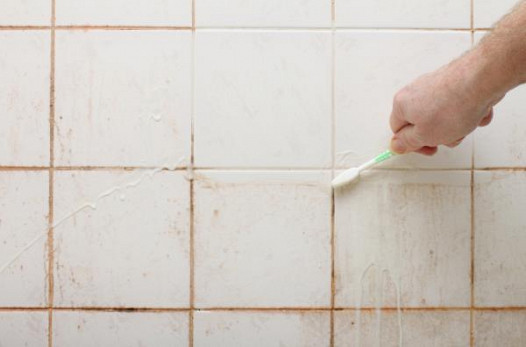Not every anti-slip solution is created equal. A lot of the solutions in the market can harm your flooring.
Slips and falls are dangerous, especially in places where people walk a lot, like hospitals, offices, and homes. That’s why anti-slip solutions are used to make floors safer. But not all anti-slip coatings are the same. Some, like acid etching, may seem to work in the short term but can cause serious long-term problems for your flooring.
In this article, we’ll explore the differences between two popular anti-slip solutions: acid etching and nanotechnology coatings. While both reduce slipperiness, one can harm your floors, and the other provides a better, long-lasting solution. Let’s find out why.
How to Identify an Acid Etching Anti-slip Solution
In this article, we’ll explore the differences between two popular anti-slip solutions: acid etching and nanotechnology coatings. While both reduce slipperiness, one can harm your floors, and the other provides a better, long-lasting solution. Let’s find out why.
So, how can you tell if the anti-slip solution being applied to your floor is acid etching? It’s actually very easy!
Quick tip: If the applicator applies the solution and then rinses it away after about 10 minutes, it’s an acid etching solution.
Acid etching works by applying a chemical (usually hydrofluoric acid, or ‘HF’) to the floor that eats away at the surface, making it rougher. While this does create some grip and reduces slipperiness, the acid also damages the surface of the tiles. This is especially problematic on tiles with special coatings that are meant to protect them.
Did You Know Acid Etching Solutions Are Not Recommended for Hospitals or Medical Centres?
Hospitals often avoid using acid etching solutions because they can cause long-term damage to the floors. They create tiny holes and rough spots where bacteria and mould can grow. This makes the floors harder to clean and keep sanitary, which is very important in a hospital where hygiene is critical.
Many building management teams in hospitals do not allow the use of acid etching solutions because the damage can lead to expensive repairs, health risks, and safety concerns over time. A floor that seems slip-resistant today can become a bigger problem tomorrow when mould or bacteria begin to grow in the cracks created by the acid.
Even at very low concentrations, presents several significant risks to the health of those exposed to it. Exposure through skin contact and via inhalation may lead to skin and bone necrosis and major, cumulative organ damage.

The Hidden Dangers of Acid Etching Anti-slip Solution on Tiles
Let’s talk about tiles. Big tile companies like Guocera spend a lot of time and money making sure their tiles are strong, durable, and beautiful. These tiles are often coated with a protective layer that keeps them looking good for a long time. This layer helps resist stains, scratches, and fading.
But what happens when you apply acid etching?
Imagine you’ve just had beautiful new tiles installed in your home or office. After applying an acid etching solution, in just 10 minutes, the acid can eat through the protective coating. This damages the tile’s surface, makes it rough, and can even change its colour.

Acid etching doesn’t just affect how the tile feels. What’s the result? The slippery problem returns, and worse, you now have a damaged floor.
Over time, the damaged surface will wear down faster, stain more easily, and even become slippery again because dirt and moisture can settle into the rough areas. You might think the problem is fixed, but in a few months, the floor is slippery again because of mould growing in the pores that the acid created.
Owners often find that the only solution is to replace the tiles, which can be costly and inconvenient.
Nano-G Nanotechnology Anti-slip Coatings: A Superior Alternative
Unlike acid etching anti-slip solution, which physically damages the floor, nanotechnology coatings work in a completely different way. These coatings use tiny particles to create a slip-resistant layer on the floor without changing its appearance or damaging the surface.
Think of it like adding a clear protective shield to your floor that keeps it safe from slips without scratching or roughing up the surface.
Here’s why nanotechnology coatings are better:
Long-lasting protection:
Nanotechnology coatings last longer than acid etching solutions, so you don’t have to worry about slippery floors coming back anytime soon.
Water and dirt resistance:
Nanotechnology solutions repel water, dirt, and other substances that would make your floor slippery. This means you won’t have to deal with mould or grime buildup like you would with acid-etched floors.
Preserves the look:
These coatings are clear, so your tiles will look just as beautiful as they did before without harming their finish or colour.
Nano-G Nanotechnology Anti-slip solution is trusted in hospitals and medical centres because it provides better safety without the risk of damaging the floors or allowing bacteria to grow.

While acid etching might seem like a quick fix to make floors less slippery, it often causes more harm than good.
When choosing an anti-slip solution, it’s important to think long-term. Nano-G Nanotechnology Anti-slip solution is the smarter, safer choice for anyone looking to protect their floors and keep them slip-resistant without causing harm.
Want to learn more about Nano-G’s ‘anti-slip’ solution? Read more here:
Don’t let a slippery floor trip you up! We’re the experts for you, message us on these platforms:
Facebook m.me/nanogmalaysia
WhatsApp nanog.wasap.my
Or give our hotline a call at 1800-18-6266


























